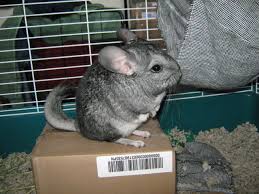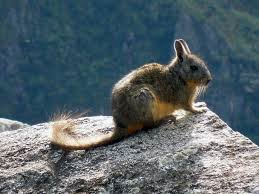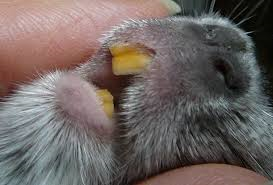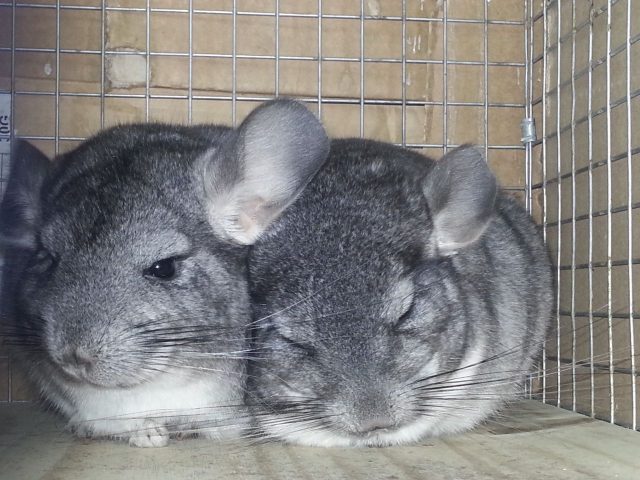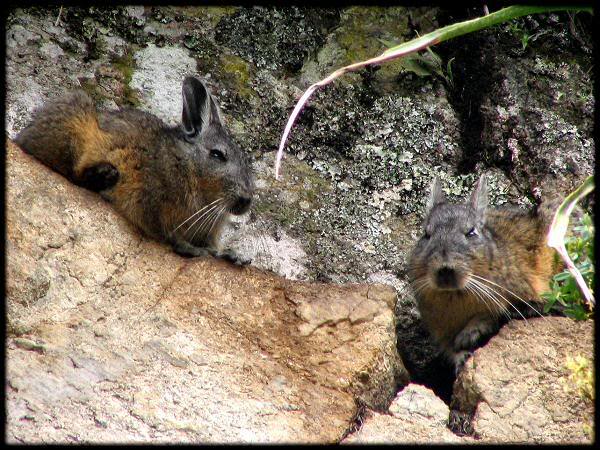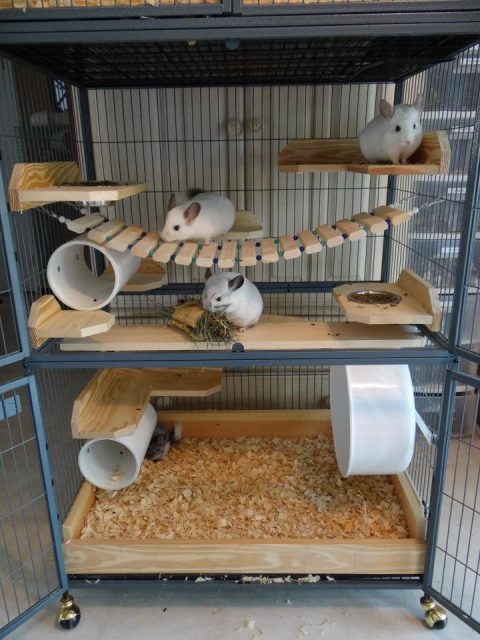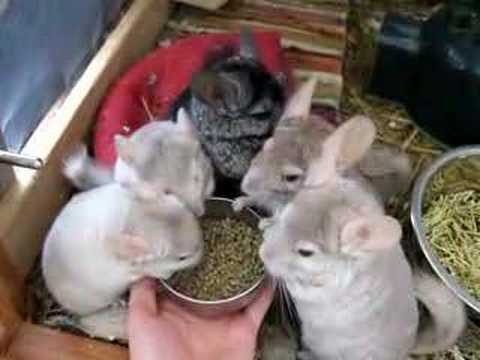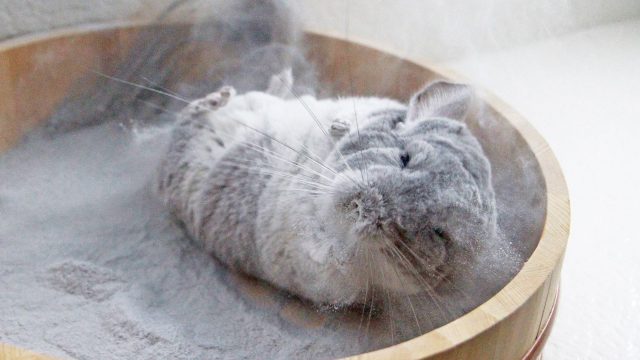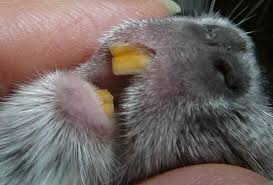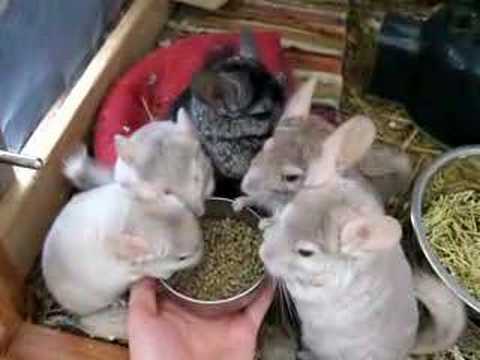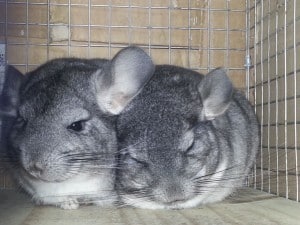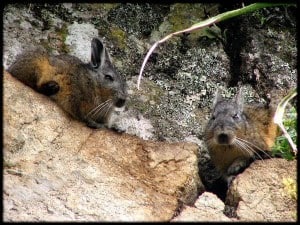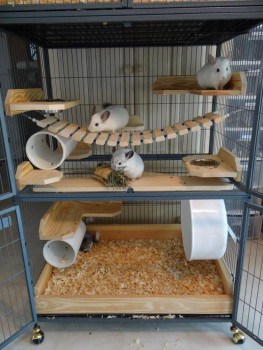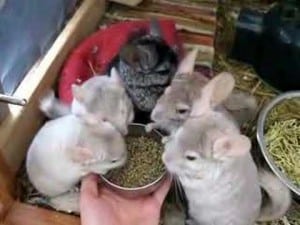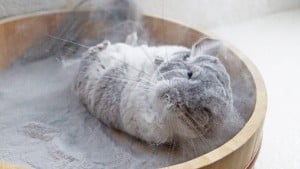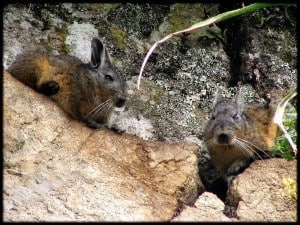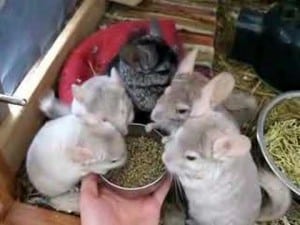Type the name of the breed you're looking for below
[wpdreams_ajaxsearchlite] Don't see the breed your're looking for? Click here and let us know!Chinchilla
| Origin | The chinchilla's name literally means "little chincha" after the Chincha people of the Andes, who once wore its dense, velvet-like fur. Chinchillas are crepuscular (most active around dawn and dusk) rodents, slightly larger and more robust than ground squirrels. In nature, chinchillas live in social groups that resemble colonies, but are properly called herds. They can breed any time of the year. Their gestation period is 111 days, longer than most rodents. Due to this long pregnancy, chinchillas are born fully furred and with eyes open. Litters are usually small in number, predominantly two. |
| Natural Habitat | They are native to the Andes mountains in South America and live in colonies called "herds" at high altitudes up to 4,270 metres (14,000 ft). Historically, chinchillas lived in the Andes of Bolivia, Peru, and Chile, but today colonies in the wild remain only in Peru and Chile at altitudes of over 5000m. In their native habitats, chinchillas live in burrows or crevices in rocks. They are agile jumpers and can jump up to 6 ft (1.8 m). Predators in the wild include birds of prey, skunks, felines, snakes and canines. Chinchillas have a variety of defensive tactics, including spraying urine and releasing fur if bitten. In the wild, chinchillas have been observed eating plant leaves, fruits, seeds, and small insects. |
| Wild Species | The two living species of chinchilla are Chinchilla chinchilla and Chinchilla laniger. There is little noticeable difference between the species, except C. chinchilla has a shorter tail, a thicker neck and shoulders, and shorter ears than C. lanigera. The former species is currently facing extinction; the latter, though rare, can be found in the wild. Domesticated chinchillas are thought to have come from the C. lanigera species. Along with their relatives, viscachas, they make up the family Chinchillidae. |
| History with Humans | Once Spanish explorers found indigenous south American people wearing the fur, the immediately exported chinchilla fur to Europe that peak by the 1800's. By the end of the 19th century, chinchillas had become quite rare due to hunting for their ultra-soft fur. Most chinchillas currently used by the fur industry for clothing and other accessories are farm-raised. Chinchilla fur is considered one of the most valuable furs in the world. Domesticated chinchillas are still bred for fur. Chinchillas are currently listed as a critically endangered species by the IUCN Red List of Threatened Species due to a severe population loss approximated at a 90% global population loss over the last 15 years. The severe population decline has been caused by chinchilla hunting by humans. Their fur is popular in the fur trade due to its extremely soft feel, which is caused by the sprouting of 60 hairs (on average) from each hair follicle. Though it is illegal to hunt wild chinchillas, the wild animals are now on the verge of becoming extinct because of continued illegal hunting. |
| As Pets | Chinchillas require extensive exercise. Their teeth need to be worn down, as they grow continuously and can prevent them from eating if they become overgrown. Wooden sticks, pumice stone and chew toys are good options, but conifer and citrus woods (such as cedar or orange) should be avoided because of the high content of resins, oils and phenols that are toxic for chinchillas. Birch, willow, apple, manzanita or kiln-dried pine woods are all safe for chinchillas to chew. Chinchillas lack the ability to sweat; therefore, if temperatures get above about 23.9°C (75°F), they could get overheated and may suffer from heat stroke. Chinchillas dissipate heat by routing blood to their large ears, so red ears signal overheating. |
| Colour Variations | Chinchillas can be found in a variety of colours. The only colour found in nature is standard gray. The most common other colours are white, black velvet, beige, ebony, violet , and blends of these. Standard is the variable light and dark banding of grey found in the typical wild form of the chinchilla. Colour between individuals can differ. Fur can appear molted with the tips being darkest and the underside close to white and black eyes. The white variety is a true white, but not an albino form. The fur may not be completely white, sometimes there may be darker patches or some black hairs, with black ears and eyes . There are two beige varieties with different genetics and colouration. A pure homozygous beige form is a very pale share of cream with a slight pink suffusion and pale pink eyes. The heterozygous beige form vary from cream to dark beige, with underside being lighter and eyes range from pink to red. The brown ebony variety has even brown fur all over its body with pink ears and eyes. The colouration can range from entirely black to a charcoal grey also . Violet variety is a recent breed with light grey fur and a lighter underside. |
| Care | When handling your chinchilla, it is important to do it gently. First, slide your hand under its belly and put your other hand on top of the chinchilla. Make it feel secure by using the hand under the chin to hold its hind legs and bum. Never hold your pet too tightly however keep in mind that they can be fidgety, therefore hold them firmly. Remember never squeeze them particularly around the upper chest. This is because they have a ‘floating ribcage’ and your careless handling can result in severe internal injuries to your pet chinchilla. |
| Bath Requirements | As a hygiene requirement chinchillas must have access to a dust bath which the animal will use to care for its fur and massage itself. In captivity care must be taken that the dust provided to chinchillas contains no dangerous chemical. The animals instinctively clean their fur by taking dust baths, in which they roll around in special dust made of fine pumice. In the wild, the dust is formed from fine, ground volcanic rocks. The dust gets into their fur and absorbs oil and dirt. These baths are needed a few times a week. Chinchillas do not bathe in water because the dense fur prevents air-drying, retaining moisture close to the skin, which can cause fungus growth or fur rot. A wet chinchilla must be dried immediately with towels and a no-heat hair dryer. The thick fur resists parasites, such as fleas, and reduces loose dander, making chinchillas hypoallergenic. |
| Housing | Chinchillas need large indoor living spaces. A cage measuring 50 cm (20 in) square by 100cm (40 in)high is an appropriate size for a pair of adults. The cage should be made of metal mesh of 2.5 cm square, with a 16 gauge or greater to resist damage due to teeth, and a metal tray bottom is most durable. The interior should be furnished with large branches of non-toxic wood. Insure the wood is secure to the cage, so when it gets worn there is no risk of injury. Chinchillas also enjoy having a nesting box on the ground to rest in. Its dimensions should be 50 cm (20 in) long and 25 cm (10 in) in width and height. A climbing shelf made of 1 cm metal mesh on the side of the cage is another good housing feature. The cage must also include wood shavings to cover the floor, a dust box for bathing (not in cage all the time), and of course a food and water dispenser. |
| Health | The presumption in the care of chinchillas is that conditions which are similar to their natural habitat are best for their care. Chinchillas are accustomed to low temperatures and low relative humidity. |
| Diet | Chinchilla dietary needs are highly specific. They should have a diet similar to the wild variety to maintain health. In the wild Chinchillas eat and drink very small amounts, they eat and digest desert grasses, so cannot efficiently process fatty or high protein foods, or too many green plants. A high quality, hay-based pellet and a constant supply of loose timothy hay will meet all of their dietary needs There are specially formulated chinchilla pellets that may be bought. Be gradual when changing food types to avoid illness. Food dispensing devices help keep the food clean. Chinchillas are adapted to a high fiber diet, so a supply of fresh quality meadow hay digestion. Another recommended diet for chinchillas in captivity might be a mixed-food diet including wheat bran, oats, barley, millet, linseed, dietary calcium, salt, fennel, powdered milk, and hay to go with leaves and herbs. Sick chinchillas may be more energetic if fed alfalfa hay meal, yeast, glucose, and rice flakes mixed with the regular food. Chinchillas' very sensitive gastrointestinal tracts can be easily disrupted by most other foods. Fresh vegetables and fruit should be avoided, as these can cause bloat, which can be fatal. Sweets and dried fruit treats should be limited to one per day, at the very most. This can lead to diarrhea, or in the long term, diabetes. Nuts should be avoided due to their high fat content. High protein foods and alfalfa hay can cause liver problems and should be limited. |
| Dentistry | Chinchillas in captivity are prone to problems with their molars if they are not fed an appropriate diet and given access to chewing tools. This is often misinterpreted as a problem with their incisors, and is inappropriately treated by cutting the incisors which does not lead to relief for the animal. Problems with the molars can result in watery eyes, gum infections, and other infections. There is little effective treatment for chinchillas with molar problems so prevention and good diet is recommended. In breeding, any chinchilla with a tooth problem should not be bred, as it is suspected that dental problems can be hereditary and offspring of chinchillas with this problem are prone to having them also. |
| Infectious Diseases | Infectious diseases are better prevented than treated. Prevention strategies should include keeping the chinchilla accommodations clean, giving them a climate matching their natural one, providing an optimum diet, and immunization when appropriate. |
| Mental Health | Chinchillas are easily distressed and when they are unhappy they may have physical symptoms. In protecting their health care should be taken not to disturb them, and lots of things disturb them. Humans who monitor the chinchillas can often have intuitive ideas about recent changes which might be disturbing chinchillas who exhibit new symptoms, as chinchillas are sensitive enough to physically react when something new is bothering them. It is not appropriate to suddenly change a chinchilla's regular diet, especially when they are sick, as this upsets them. Sick chinchillas may quit eating if they are stressed, which can make them even more weak. Chinchillas which live in communities and are breeding must not be disturbed in February to March or from August to September as they are especially sensitive in these breeding seasons. Chinchillas are social animals and are likely to be upset to have their breeding mate changed in breeding season. They are known to be disturbed by a change of diet in these times, so care should be taken by breeders that the food given at the beginning of these times is in large supply and can be given without change for the duration of the season. |

